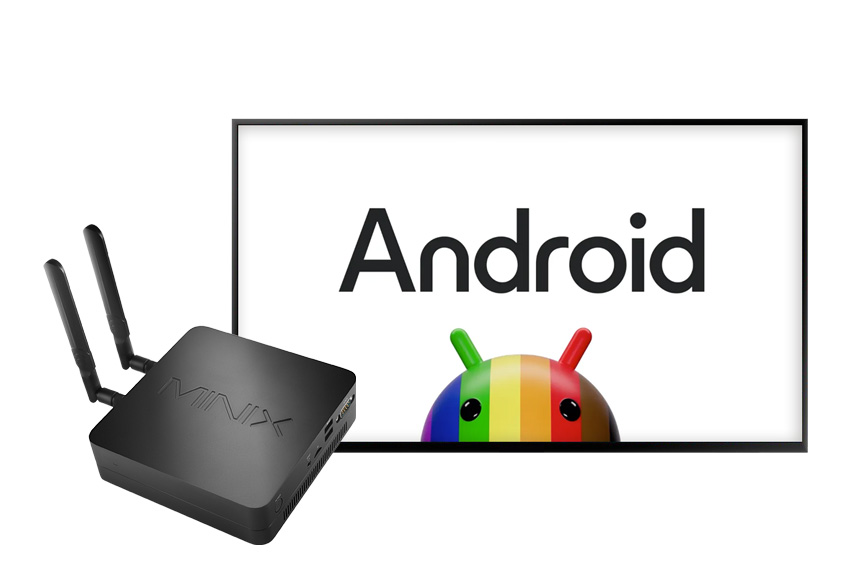FREE Digital Signage Software for Android
How to create digital signage
screens for Android devices

Empower your digital signage with Android and PosterBooking
Creating digital signage screens using Android involves a combination of hardware, software, and content management.
Digital signage is an effective way to display dynamic content in various settings such as retail stores, restaurants, offices, and public spaces. Here are the steps to create digital signage screens using Android:
Step 1: Select the Right Hardware
Choose Android-based hardware that suits your needs. This can be a dedicated Android digital signage player (recommended) or a smart TV with Android OS. Ensure the hardware has sufficient processing power, memory, and storage to run your content smoothly.
Step 2: Connect your device to the internet
It is important to connect your device to the internet in order to upload and update content remotely.
Step 3: Download the PosterBooking app
On your Android Device, go to the Play Store and search for PosterBooking. Download and install the latest app. If your Android device does not have access to the Play Store, you may have to manually install the .apk. (We do not recommend this as you will not be able to automatically update the app).
Step 4: Create Content
Compared to traditional printed signage, digital signage is more cost-effective in the long run. Once you have the hardware in place, you can update content without the expense of reprinting materials. This scalability makes it an ideal solution for franchises with multiple locations, as they can maintain consistent branding while reducing printing and distribution costs.
5: Enhanced Operational Efficiency
Design and create the content you want to display on your digital signage screens. It is important to make sure you get the right dimensions for your content. If your TV is landscape, your content dimensions need to be 1920 x 1080 pixels. If the TV is portrait, then it needs to be 1080 x 1920 pixels. Designing content smaller than these dimensions will mean that they will be stretched, resulting in a loss of quality.
Step 5: Upload your content on the dashboard
Upload your design on the dashboard and add a screen and playlist. Add your design to a playlist and screen.
Step 6: Sync your Android player
Open the PosterBooking app on your Android player and enter the 8-digit code onto your dashboard, in the “Screens” pagZ. The app will update and show the content you have added onto the dashboard
Step 7: Manage and Monitor
Regularly update and manage your content to keep it fresh and engaging. Monitor the performance of your digital signage screens and make adjustments as needed.